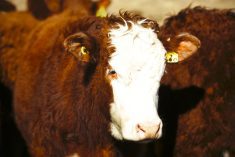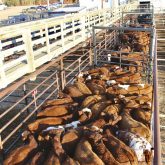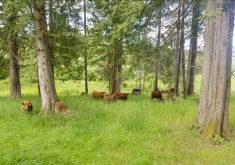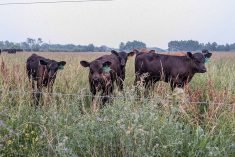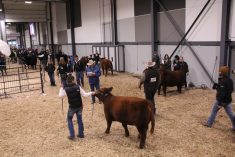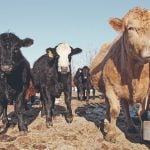Does preconditioning your calves pay? It has been a long-studied and debated topic.
When it comes to preconditioning cattle, “every operation is different,” says Kathy Larson, research associate for the department of agricultural and resource economics at the University of Saskatchewan. Larson says there is opportunity for profit in preconditioning every year but it’s variable.
To look at the economics of preconditioning for the producer, Larson used data from a study of two groups of calves. One group was preconditioned for 45 days from one ranch and the other group was straight from auction. The results showed that while preconditioned calves had a lower bovine respiratory disease rate and lower morbidity than the auction market calves, the auction market calves gained 0.27 kg more a day than the preconditioned calves.
Read Also
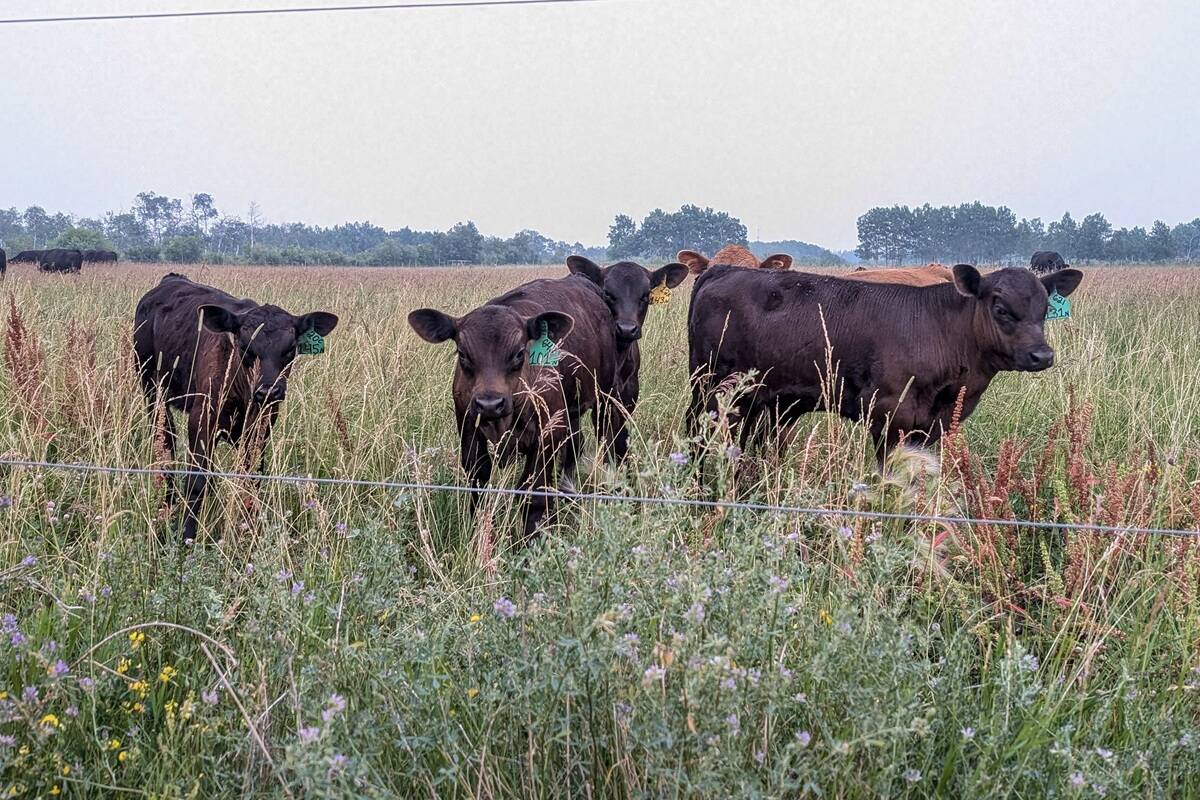
Methane-reducing solutions for beef cattle have a ways to go, say Canadian scientists
Companies developing vaccines that inhibit methane (CH4) production in cattle are facing challenges, say experts, and in the process finding their development is more complex than first thought.
These results surprised Larson, but the study used calves from an auction market with an unknown history. Using ration data from the preconditioned calves along with other information such as vaccines given, yardage, interest, marketing costs and death loss, along with the price for the year the research was conducted (fall 2020), it was determined there was not enough revenue to cover the cost to precondition. However, when the research team looked at prices during other years, there would be enough revenue to generate a profit from preconditioning.
Because every farm or ranch is different, producers are encouraged to use the data they have to see if it has advantages for them. The Beef Cattle Research Council’s preconditioning calculator, developed by Canfax, allows producers to plug in their data to see if preconditioning holds economic opportunity for them. The calculator provides an estimate of net returns and projected break-even prices using three different preconditioning programs.
“I’m totally in support of doing what we can to prepare those calves for their next step to reduce their stressors through preconditioning,” Larson says.
READ MORE: Study delves deeper into preconditioning calves
The articles and research surrounding preconditioning have been around for a very long time, with many going back to the 1960s. But why aren’t more producers preconditioning? A lot of it has to do with a lack of third-party certification, Larson says.
“The verification that you have done, all the steps have different definitions to different people.”
There were programs in the past, managed by different entities. A program in Alberta was in the form of various sales that advertised preconditioned calves back in the 1980s to get more producers to precondition their calves. Some of those programs didn’t last long.
However, similar programs are now making a comeback. In 2021, Merck introduced its PrimeVAC 45 program in Canada. Merck lays out the protocols, such as vaccinating calves before weaning for respiratory and clostridial disease; weaning calves a minimum of 45 days before sale; completing any castration, dehorning or branding at least three weeks before transport; and getting calves used to eating from a bunk and drinking from a water bowl. Calves are then able to be sold through an online auction with that verification.
“The folks that are doing the preconditioning are the ones looking to take advantage of the premium sales,” she says.
The aim of these verification programs is getting producers to declare the calves are preconditioned. Larson says there has been a study that looked at two Alberta auction markets to see what attributes of the sale seemed to be associated with higher prices.
“Preconditioning had some influence (on price).”
However, when she had a student look at lots from online auction sales from August to December, there were very few lots that mentioned the term “preconditioning” — less than two per cent over five years, she says. Larson says she had feedback from others about the observations and was told that preconditioned calves show up at auction in January and February — outside of the time they were looking in.
A lot of times, though, cow-calf producers want a premium for preconditioning. “Producers want to be rewarded, and they’re not guaranteed a premium for the preconditioning.”
Often it comes down to who will be paying that premium. If it’s the feedlot who buys the calves covering the premium, the buyers may be skeptical preconditioning actually took place.
“That third-party certification would help,” she says.
Based out of Hudson Oaks, Texas, Superior Livestock, North America’s largest satellite auction, has its own verification requirements. They have a list on their website, and then a self-declaration that the producer signs prior to sale. There are measured premiums from their sales, Larson says.
“That’s part of what needs to be in place.” It goes beyond saying what happened, to actually signing off and following protocols. There is also more research in the works looking at following preconditioned cattle for longer periods to their finished weight.
Another reason why producers might not consider preconditioning is that 45 days is not enough time to make money on those animals.
“Most producers, if you’re going to retain (those calves), will do the background or long yearling.”
Also, cash flow on the farm might deter preconditioning. “You don’t want to run the risk of having (your calves) another 45 days and dealing with the headaches of their stress. There could be a number of reasons.
“There are some folks who precondition and really stand by it,” Larson says. These folks usually have a consistent buyer for their animals, as well.
But there are still feedlots that prefer “green calves.” She says we are at a point now where there is increasing pressure for producers to show they are doing their part for stewardship and responsible use of antibiotics.
“That could be some of the pressure that ends up having producers want to adopt some of the new marketing streams.”
– Jill Burkhardt, her husband Kelly and their three children own and operate a mixed farm near Gwynne, Alta. Originally hailing from Montana, Burkhardt has a range management degree from Montana State University.



